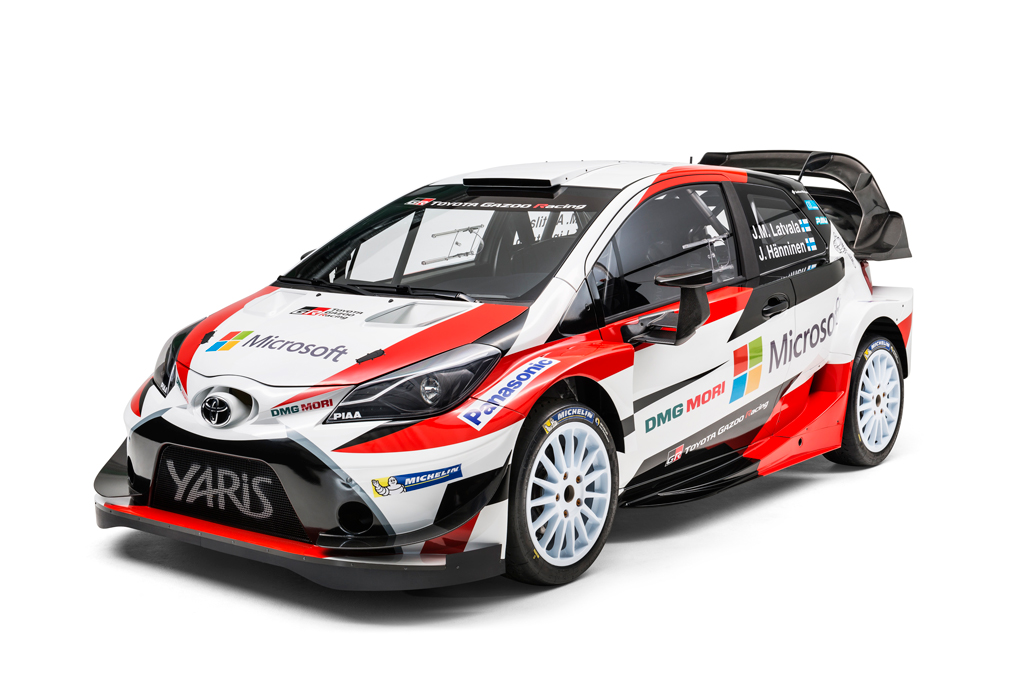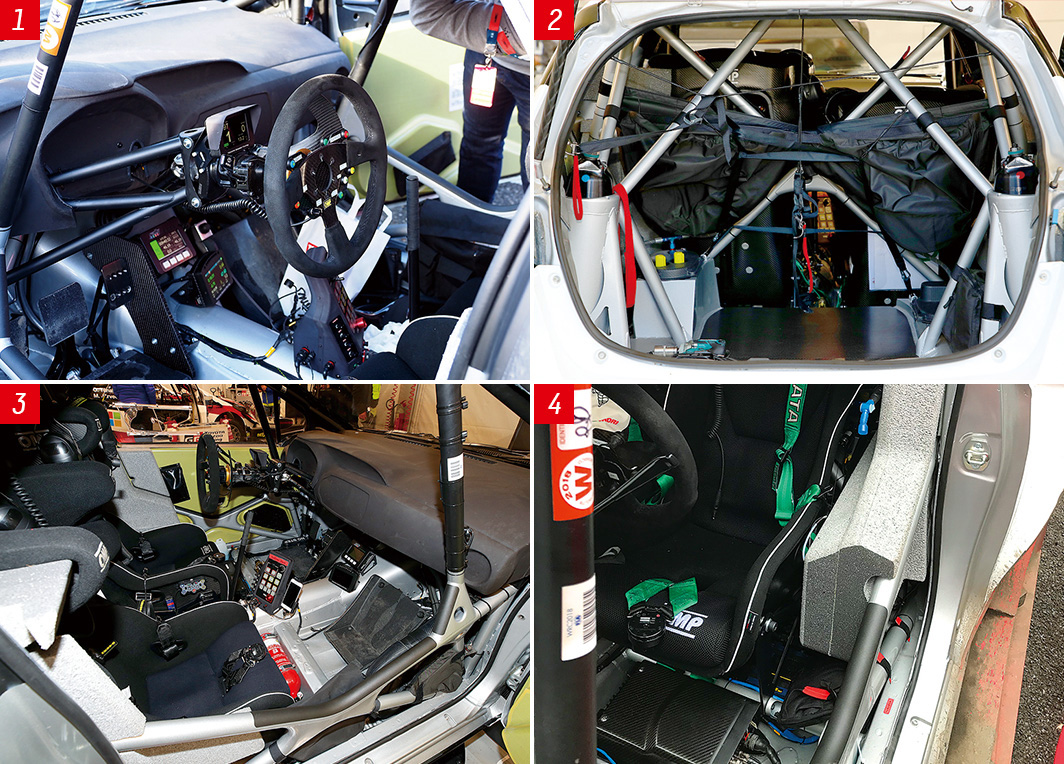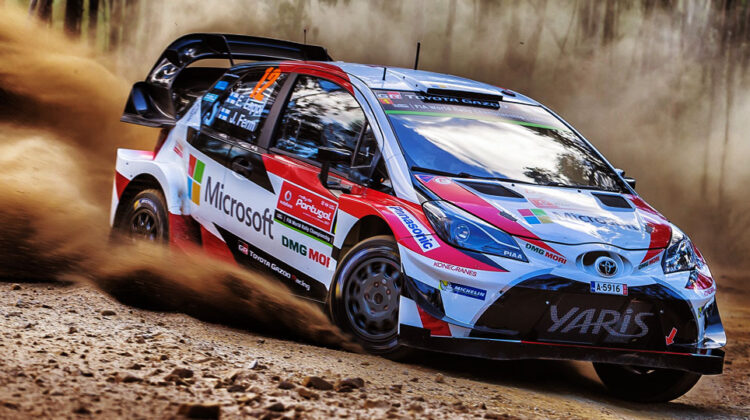2017 Toyota Yaris WRC
The 2017 Toyota Yaris WRC was a force to be reckoned with in the world of rallying. Let’s dive into its details:
The Toyota Yaris WRC: A Rally Beast
- Rally Car, Not Road Car: The Yaris WRC was a purpose-built rally car, designed specifically for competition in the World Rally Championship (WRC). It was not sold to the public.
- Based on the Yaris: It was based on the third-generation Toyota Yaris, but heavily modified for rallying.
- Powerful Engine: It featured a turbocharged 1.6-liter four-cylinder engine, producing around 380 horsepower (depending on regulations).
- All-Wheel Drive: It had a sophisticated all-wheel drive system to handle the demanding conditions of rally stages.
- Lightweight and Agile: The Yaris WRC was designed to be lightweight and agile, with a focus on handling and cornering speed.
- Success in the WRC: The Yaris WRC was incredibly successful in the WRC, winning the manufacturers’ championship in 2018, 2019, and 2020. It also helped Toyota driver Ott Tänak win the drivers’ championship in 2019.

2017 Toyota Yaris WRC
Key Features:
- Carbon Fiber Body: The Yaris WRC featured a lightweight carbon fiber body to reduce weight.
- Active Aerodynamics: It had adjustable rear wings and diffusers to optimize downforce and stability.
- Sophisticated Suspension: The suspension was fully adjustable to handle different rally surfaces and conditions.
- Rally-Specific Safety Features: It included a roll cage, safety harnesses, and fire suppression systems.
The Legacy:
- Technological Advancements: The Yaris WRC pushed the boundaries of rally car technology, with innovations in engine design, aerodynamics, and suspension.
- Inspiration for Road Cars: Some of the technology developed for the Yaris WRC eventually found its way into Toyota’s road cars, contributing to improved performance and handling.
- A Rally Icon: The Yaris WRC became a popular and iconic rally car, inspiring a generation of rally fans.
While all WRC cars share a common goal of winning rallies, there are key differences that make each one unique. Here’s a breakdown of how the Yaris WRC stood out from the competition:
1. Engine and Powertrain:
- Turbocharged 1.6-liter: The Yaris WRC’s 1.6-liter turbocharged engine was a common choice in the WRC, but Toyota’s engineers managed to extract impressive power and torque from it, making it one of the most potent engines in the field.
- All-Wheel Drive System: The Yaris WRC’s all-wheel drive system was highly sophisticated, with advanced differentials and a clever hydraulic system to manage power distribution between the wheels. This gave it exceptional traction and control on various surfaces.

2. Aerodynamics and Design:
- Active Aerodynamics: The Yaris WRC featured adjustable rear wings and diffusers to optimize downforce and stability, giving it a significant advantage on high-speed sections of rallies.
- Lightweight Design: The use of carbon fiber and other lightweight materials helped the Yaris WRC achieve a low overall weight, making it incredibly agile and responsive.
3. Suspension and Handling:
- Sophisticated Suspension: The Yaris WRC had a fully adjustable suspension system that allowed drivers to fine-tune the car’s handling for different rally stages and conditions.
- Exceptional Handling: The combination of a powerful engine, sophisticated all-wheel drive system, and finely tuned suspension gave the Yaris WRC exceptional handling and cornering speed.
4. Driver Focus:
- Driver-Centric Design: The Yaris WRC was designed with the driver in mind, with a focus on ergonomics, visibility, and driver feedback.
- Top-Tier Drivers: Toyota attracted some of the best rally drivers in the world, including Ott Tänak, Sébastien Ogier, and Jari-Matti Latvala, who helped the car achieve its success.
Key Differences from Other WRC Cars:
- Toyota’s Engineering: Toyota’s expertise in engine development and all-wheel drive technology gave the Yaris WRC a significant advantage over its rivals.
- Aerodynamic Focus: The Yaris WRC’s emphasis on active aerodynamics helped it stand out in the field, particularly on high-speed stages.
- Driver Lineup: Toyota’s impressive driver lineup played a crucial role in the Yaris WRC’s success.

Both the Toyota Yaris WRC and the Hyundai i20 WRC were top contenders in the World Rally Championship, each with its own strengths and weaknesses. Here’s a breakdown of their performance comparison:
Toyota Yaris WRC:
- Strengths:
- Powerful Engine: The Yaris WRC’s turbocharged 1.6-liter engine was known for its strong power delivery and torque, giving it a significant advantage on high-speed stages.
- Sophisticated All-Wheel Drive: The Yaris WRC’s all-wheel drive system was highly sophisticated, providing exceptional traction and control on various surfaces.
- Aerodynamic Advantage: The Yaris WRC’s active aerodynamics, with adjustable rear wings and diffusers, gave it a significant edge in terms of downforce and stability on high-speed sections.
- Weaknesses:
- Handling on Tight Stages: While the Yaris WRC excelled on fast stages, some drivers felt it wasn’t as agile as its rivals on tighter, more technical stages.
Hyundai i20 WRC:
- Strengths:
- Agile Handling: The i20 WRC was known for its exceptional handling and agility, particularly on tight and twisty stages.
- Driver Feedback: The i20 WRC offered excellent driver feedback, allowing drivers to feel the car’s limits and adjust their driving style accordingly.
- Reliability: The i20 WRC was generally considered to be very reliable, which was crucial in the demanding conditions of rallying.
- Weaknesses:
- Engine Power: The i20 WRC’s engine, while strong, was not quite as powerful as the Yaris WRC’s, particularly on high-speed stages.
- Aerodynamics: The i20 WRC’s aerodynamics were not as advanced as the Yaris WRC’s, which meant it was slightly less stable on high-speed sections.
Overall Comparison:
- Yaris WRC: The Yaris WRC was a powerful and fast car that excelled on high-speed stages. It was a bit less agile on tighter stages.
- i20 WRC: The i20 WRC was a more agile and driver-friendly car that excelled on technical stages. It was slightly less powerful than the Yaris WRC.
Conclusion:
Both the Yaris WRC and the i20 WRC were top-tier rally cars, each with its own strengths and weaknesses. The Yaris WRC was a powerful and fast car, while the i20 WRC was more agile and driver-friendly. Ultimately, the best car for a particular rally depended on the specific conditions of the stage and the driver’s preferences.
- +ABS
- +ACB
- +Adaptive Cruise Control
- +Alloy wheels
- +Cruise control
- +ESC
- +Leather interior
- +Leather Seats
- +Panoramic Sunroof
- +Parking sensors
- +TC
- +TPMS
- +Xenon

Leave a Reply